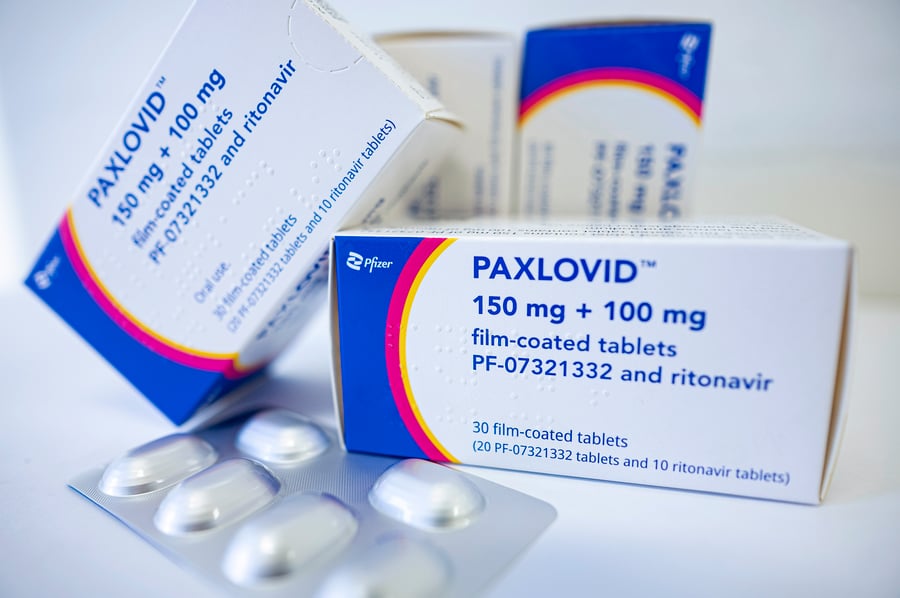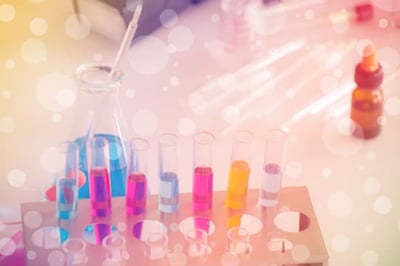

Understanding COVID-19 Rebound After Paxlovid Treatment
Two high profile COVID-19 rebound cases after Paxlovid treatment this summer have put the phenomenon – which could affect approximately 5 percent of the patients taking the medication – in the spotlight.
First, President Joe Biden’s chief medical adviser, Dr. Anthony Fauci experienced a COVID rebound case in June and then Biden himself, after testing positive for COVID on July 21, subsequently tested negative after taking the antiviral Paxlovid only to test positive again on July 30 in a rebound case.
“Folks, today I tested positive for COVID again. This happens with a small minority of folks. I’ve got no symptoms but I am going to isolate for the safety of everyone around me,” tweeted Biden according to Politico.
“Dr. Twitter” May Not Have the Right Numbers on Rebound COVID
Biden was far from the only person to tweet about COVID rebound this summer, a point not lost on the White House’s COVID-19 Response Coordinator, Dr. Ashish Jha.
“So, we’ve looked at the clinical data on this, because if you look at Twitter – it feels like everybody has rebound, but it turns out there’s actually clinical data,” said Jha in a White House press briefing. “If you look at major health systems that have given out Paxlovid to tens of thousands of people, rebound rates are around 5 percent. There are some studies that say it’s maybe 7, 8 percent, some that say it’s 2 percent, but it’s in single digits. So it happens; it’s not that frequent.”
Jha stressed that, despite the COVID rebound cases, patients should not be afraid to take Paxlovid.
“But here’s the key point about rebound, which is: When people have rebound, they don’t end up in the hospital, they don’t end up particularly sick. And the goal of Paxlovid is to keep people from getting seriously ill,” said Jha. “And so it continues to work. You know, his physician is in charge of taking care of him.
Obviously, the President will continue to be monitored, as he is. But the Paxlovid is working really well at preventing serious illness, rebound or no rebound. And that’s why he was offered it, and that’s why the President took it.”
How Paxlovid Treatment Prevents Serious Illness
The Centers for Disease Control and Prevention (CDC) says that Paxlovid continues to be recommended for early-stage treatment of mild to moderate COVID-19 among persons at high risk for progression to severe disease.
“Paxlovid treatment helps prevent hospitalization and death due to COVID-19,” said the CDC.
According to UC San Diego Health, the drug was made available under an emergency use authorization (EUA) from the U.S. Food and Drug Administration (FDA) in December 2021 after a clinical trial showed that Paxlovid could reduce the risk of hospitalization and death from COVID-19 by 89 percent.
“The treatment consists of two drugs — nirmatrelvir and ritonavir — which work together to suppress SARS-CoV-2 by blocking an enzyme that allows the virus to replicate in the body,” wrote Nicole Mlynaryk for UC San Diego Health. “It is easier to take at home compared to drugs like Remdesivir, which require intravenous injection. Treatment should be initiated within five days of symptom onset and taken twice daily for five consecutive days.”
The FDA says that treatment should be initiated as soon as possible and within 5 days of symptom onset among persons eligible to receive treatment under the EUA who:
- Test positive for SARS-CoV-2 infection
- Have mild to moderate illness
- Have one or more risk factors for progression to severe disease
- Do not require hospitalization due to severe or critical COVID-19 at the time of treatment initiation
- Do not have evidence of severe renal or hepatic impairment
What Happens in a COVID Rebound Case?
“COVID-19 rebound has been reported to occur between 2 and 8 days after initial recovery and is characterized by a recurrence of COVID-19 symptoms or a new positive viral test after having tested negative,” says the CDC. “A brief return of symptoms may be part of the natural history of SARS-CoV-2 (the virus that causes COVID-19) infection in some persons, independent of treatment with Paxlovid and regardless of vaccination status.”
Limited information currently available from case reports suggests that persons treated with Paxlovid who experience COVID-19 rebound have had a mild illness; there are no reports of severe disease.
Fauci’s case was typical of COVID rebound as he finished treatment and tested negative for COVID. But about three days later, a test came back positive again. His symptoms — runny nose, sore throat, and fever — resurfaced, too, according to CNBC.
There is currently no evidence that additional treatment is needed with Paxlovid or other anti-SARS-CoV-2 therapies in cases where COVID-19 rebound is suspected, though people who continue to test positive may still be contagious, so the CDC recommends that people restart isolation for at least five days if their illness returns.
Insufficient Drug Exposure May be Cause of COVID Rebound
CNBC said that some disease experts suspect the Paxlovid regimen is too short to clear the virus in certain people.
“One of the theories is that your natural immunity just can’t kick in quickly enough, since you have to treat within five days of symptoms, so that’s pretty early on in the course of illness," Dr. Peter Gulick, an associate professor of medicine at Michigan State University, told CNBC.
Backing up this theory is a study published June 20, 2022, in Clinical Infectious Diseases, where researchers at University of California San Diego School of Medicine evaluated one such patient and found their symptom relapse was not caused by the development of resistance to the drug or impaired immunity against the virus.
Rather, the COVID-19 rebound appears to have been the result of insufficient exposure to the drug, according to a UC San Diego Health release.
The researchers first isolated the SARS-CoV-2 BA.2 virus from a COVID-19 rebound patient and tested whether it had developed any drug resistance.
The good news is they found that after Paxlovid treatment, the virus was still sensitive to the drug and showed no relevant mutations that would reduce the drug’s effectiveness.
“Our main concern was that the coronavirus might be developing resistance to Paxlovid, so to find that was not the case was a huge relief,” said first author Aaron F. Carlin, MD, PhD, assistant professor at UC San Diego School of Medicine.
Next, the researchers sampled the patient’s plasma to test their immunity against SARS-CoV-2. The patient’s antibodies were still effective at blocking the virus from entering and infecting new cells, suggesting that a lack of antibody-mediated immunity was also not the cause of the patient’s recurring symptoms.
“The authors said the rebound of COVID-19 symptoms following the end of Paxlovid treatment is likely due to insufficient drug exposure: not enough of the drug was getting to infected cells to stop all viral replication. They suggested this may be due to the drug being metabolized more quickly in some individuals or that the drug needs to be delivered over a longer treatment duration," said the release.
More research is likely needed on COVID rebounds to understand this phenomenon more. For now, the UC San Diego researchers suggest that “Paxlovid users should be aware of the possibility of symptom rebound and be prepared to wear masks and quarantine again if symptoms return.”
Subscribe to email updates
Related Articles

Topics

Topics

Topics



